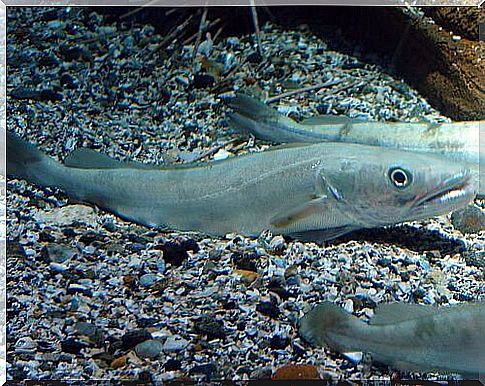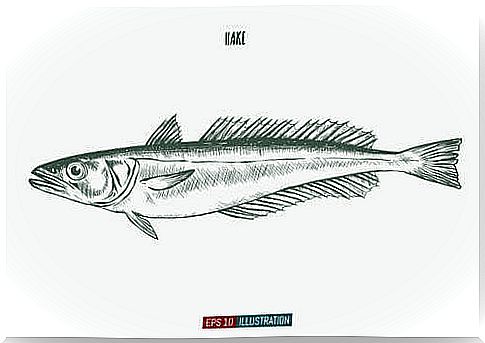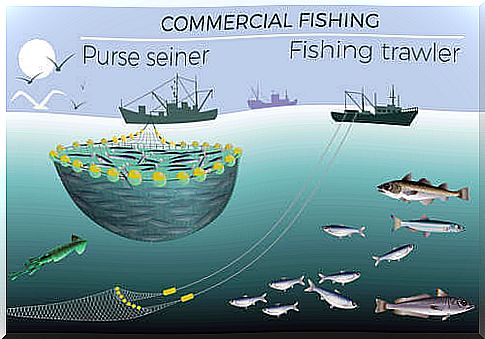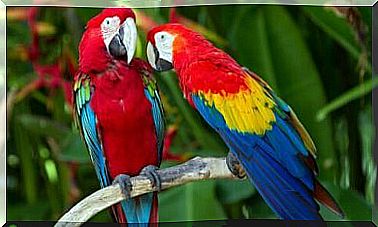The Migratory Habits Of Cod

Cod is a very common type of fish in international gastronomy. It is also known as sea pike, due to their physical resemblance to the pike ( Esox lucius ), although they do not belong to the same order. In this article, we will talk about the migratory habits of cod.
The different species of cod are distributed in all oceans, such as the Atlantic, the Indian or the Pacific. Furthermore, cod is very common in some seas, such as the Mediterranean, where however the number of specimens has decreased in recent decades.
These fish follow two very specific migration patterns. One of these has a food purpose and the other is related to the reproduction and maintenance of the species. Let’s see together the migratory habits of cod.
The cod species
Cod is a term used to refer to several species of sea bony fish belonging to different genera. It belongs to the order of the gadiforms, fish which are characterized by the first dorsal fin being very short and the second so long as to cover almost the entire length of the rest of the body.
However, the species can belong to different genera, linked to each other by physical similarity and migratory habits.
The cod species are:
- European cod ( Merluccius merluccius )
- Southern cod ( Merluccius australis)
- Silver cod ( Merluccius bilinearis )
- Argentine cod ( Merluccius hubbsi )
- Mexican cod ( Merluccius angustimanus )
- Southern Pacific cod ( Merluccius gayi )
- Grenadier cod ( Macruronus magellanicus )
- Black cod ( Dissostichus eleginoides ), which lives in the Indian Ocean
- Cod ( Urophycis tenuis )
- Cod ( Urophycis chuss )
The silver, white and red hake are very similar to each other and it is difficult to distinguish them from each other. They all live on the east coast of the United States of America, in the Atlantic Ocean.

Migratory habits of cod
Cods are demersal fish, which generally live at depths between 10 and 400 meters deep. However, specimens have been found at 1000 meters in the Mediterranean Sea. This widespread diffusion is one of the consequences of the first type of migration.
Cod follows two very specific migration patterns, one for food and the other for reproductive purposes:
- Nictemeral migration : it is a migration to surface waters during the night and to the depths during the day. The adult cod feeds on small fish – anchovies, herring or sardines – or squid that search for ocean plankton. On the other hand, the plankton their prey feed on emerges at night attracting hundreds of fish, which is why cod rises to the surface. During the day, these fish descend to the muddy bottom, where they wait for the night to protect them from darkness.
- Annual migration : When the breeding season arrives, adult females and males – ages seven and five, respectively – migrate in early spring to colder waters to reproduce. During this period, the reproductive organs are so developed that they press on the digestive system and the animal does not feed. When they reach cold waters, females and males release their gametes which will be fertilized externally.
The economic importance of cod
Many cod species have been shown to be over-exploited by fishing. The main fishing methods for these fish are trawling, fixed nets and purse seines. These methods are not selective and, in addition, some seriously deteriorate the marine environment.

In Europe and South America, cod is the most important demersal fish species for the fishing economy. Consequently, investments are frequent to study the biology and ecology of this species, whose habits are not fully known to man.
The migratory habits of cod, what its prey are, how fishing affects the populations of the different species, etc. are all aspects that need to be explored. Likewise, new, more selective fishing techniques are being sought that do not harm the species or the environment.
Aside from that, different governments are trying to strengthen legislation and establish fishing plans that reverse the deterioration of the situation of different cod species. For example, in some countries it is forbidden to fish for animals smaller than 25 centimeters. Likewise, the control by the forces of the different states has increased in order to improve the status of the cod.








